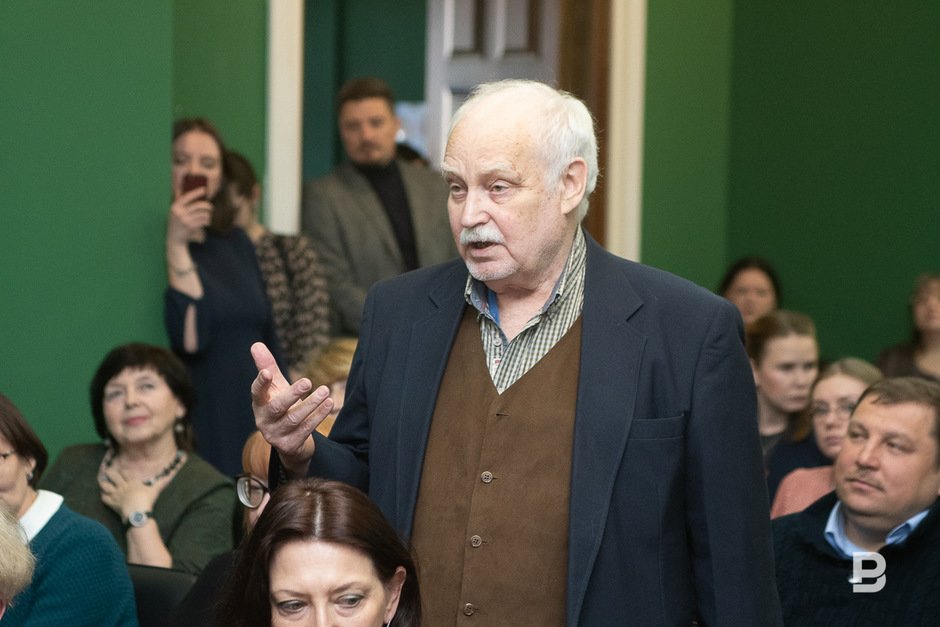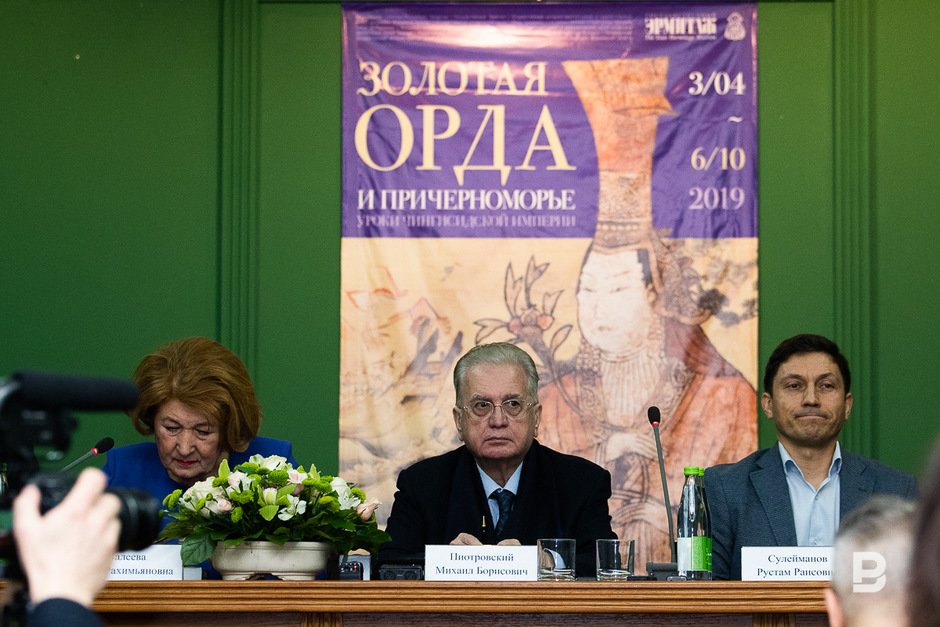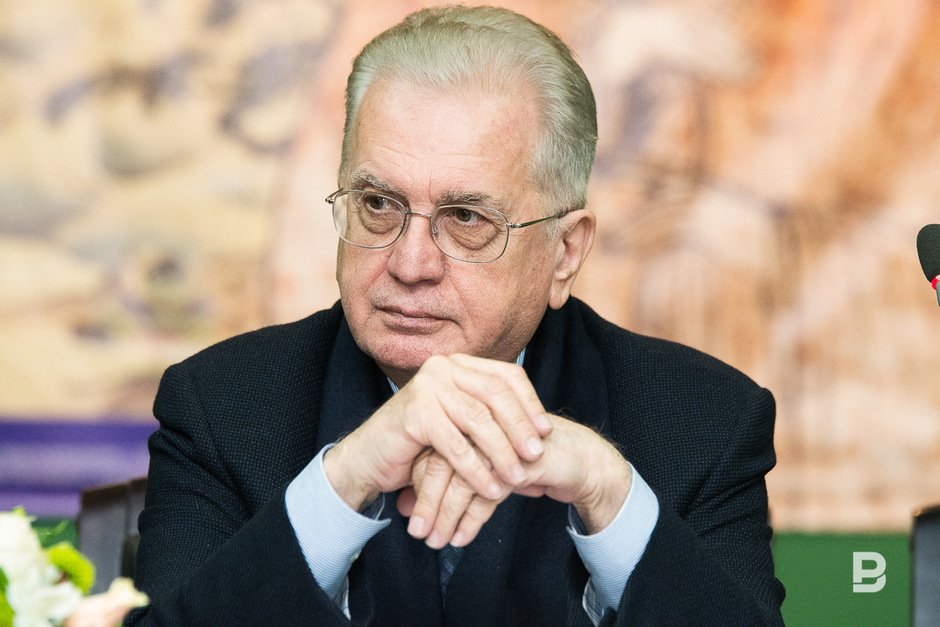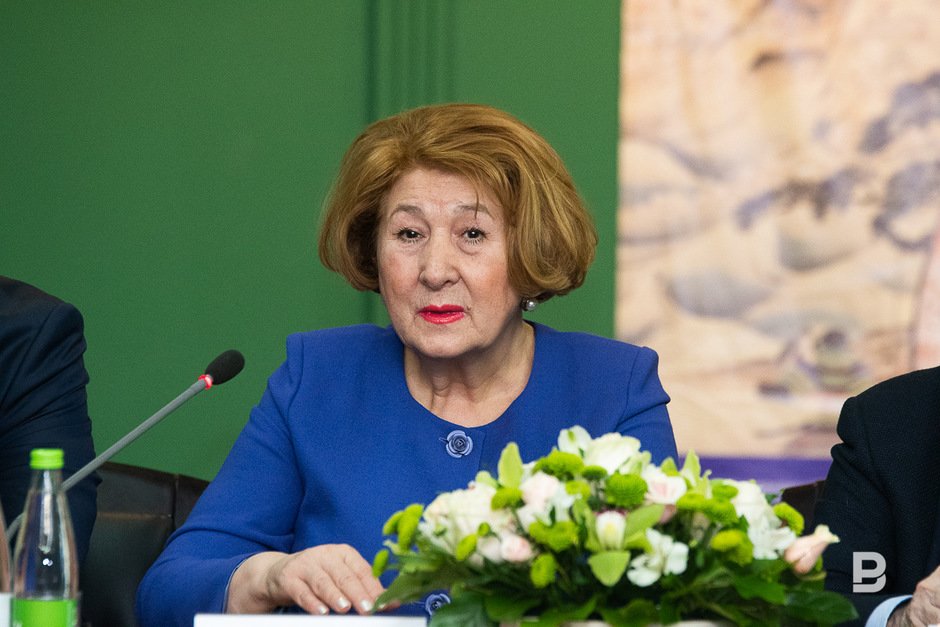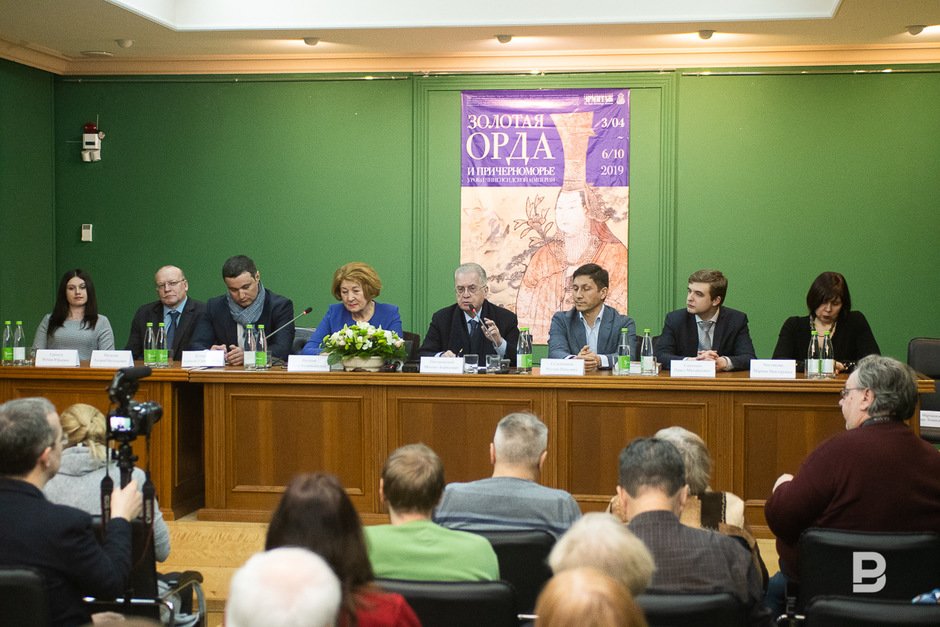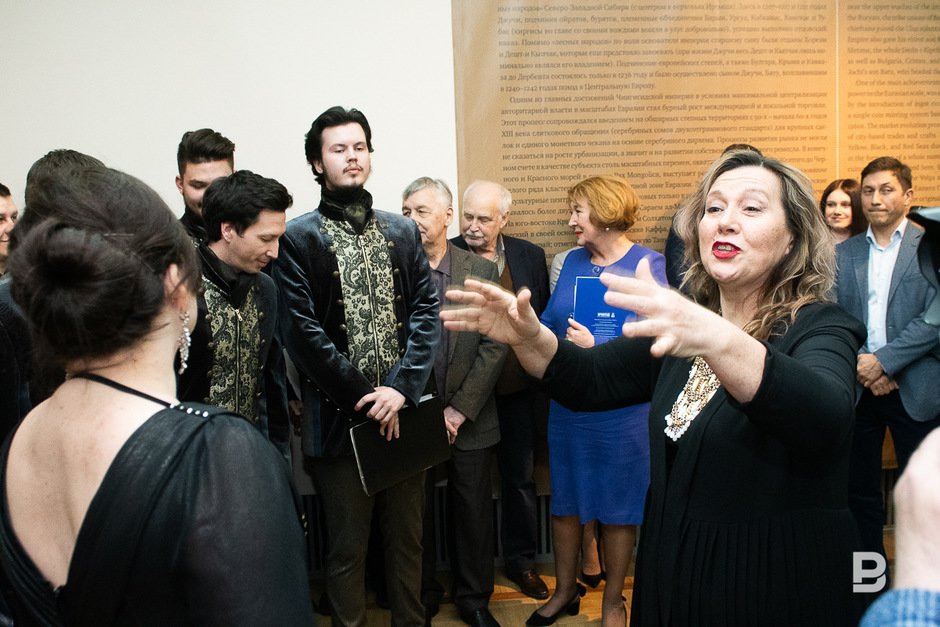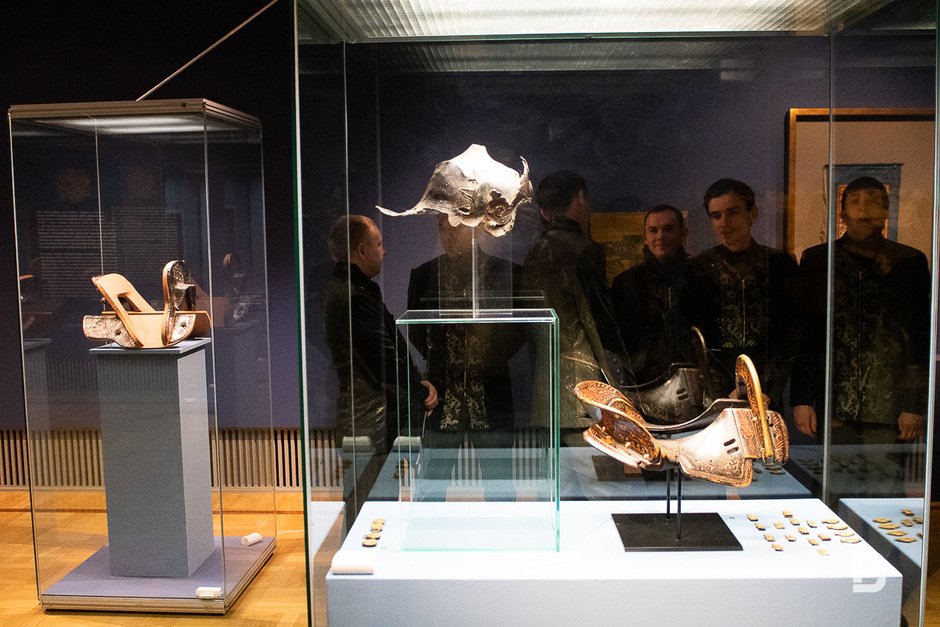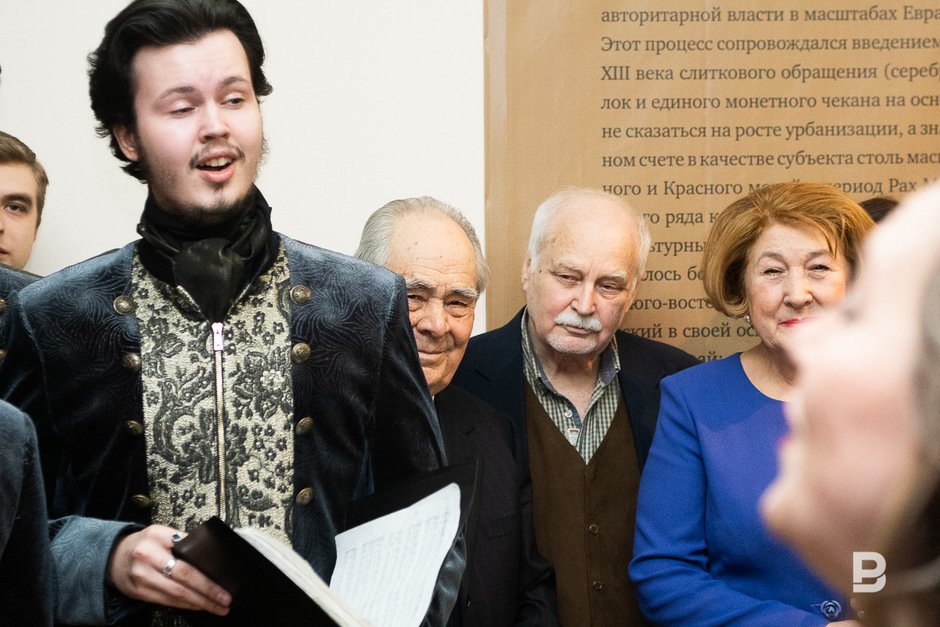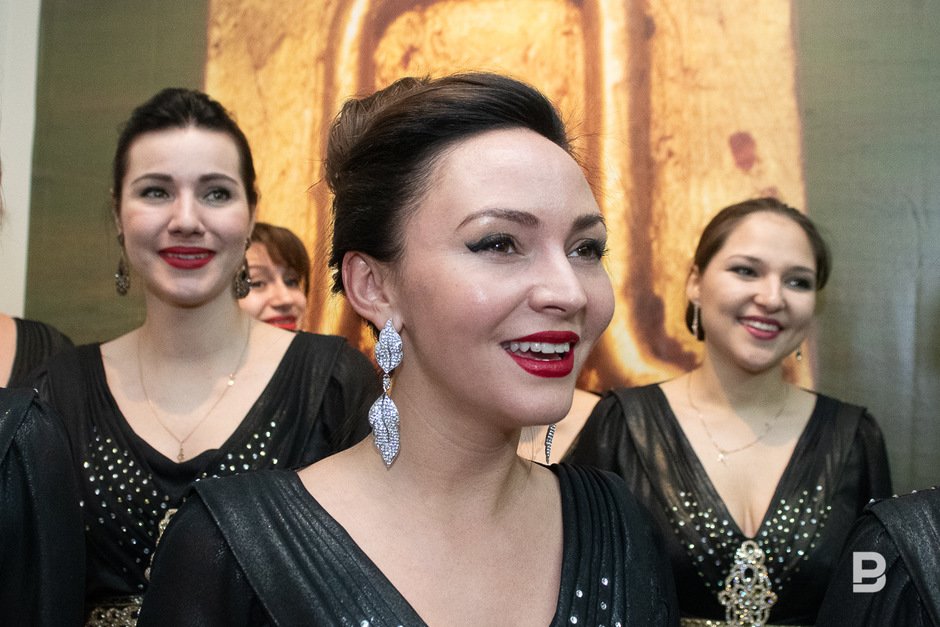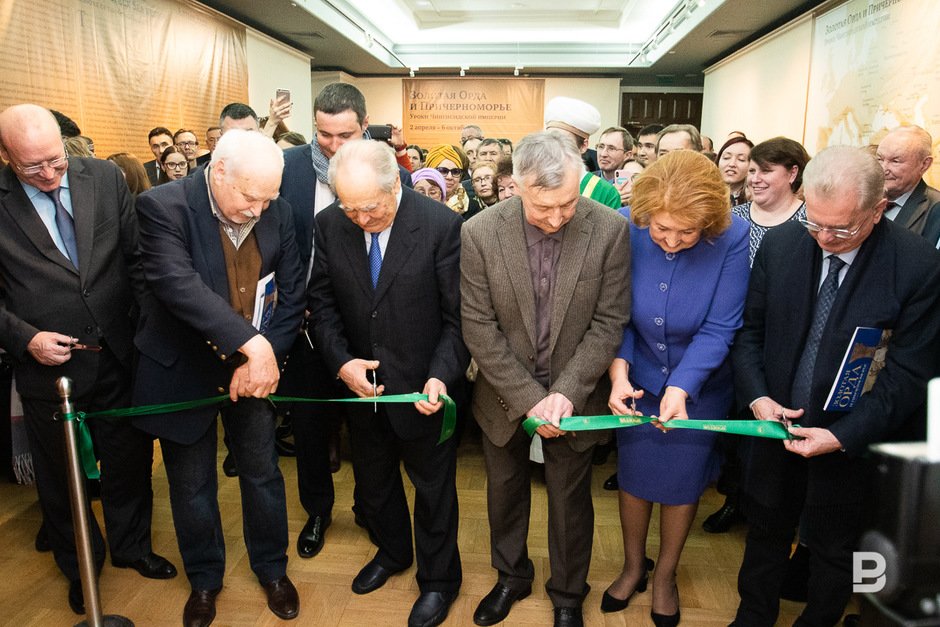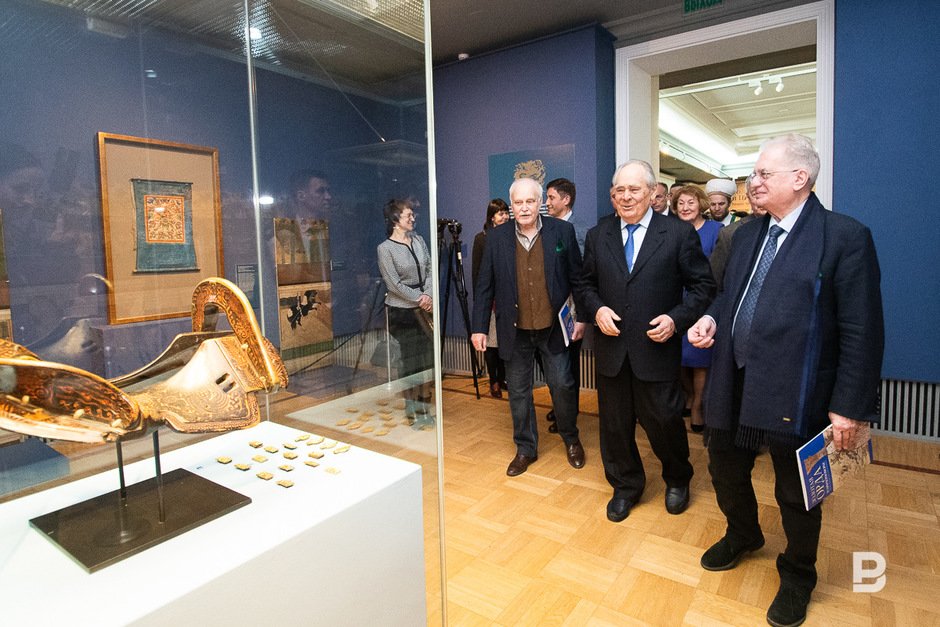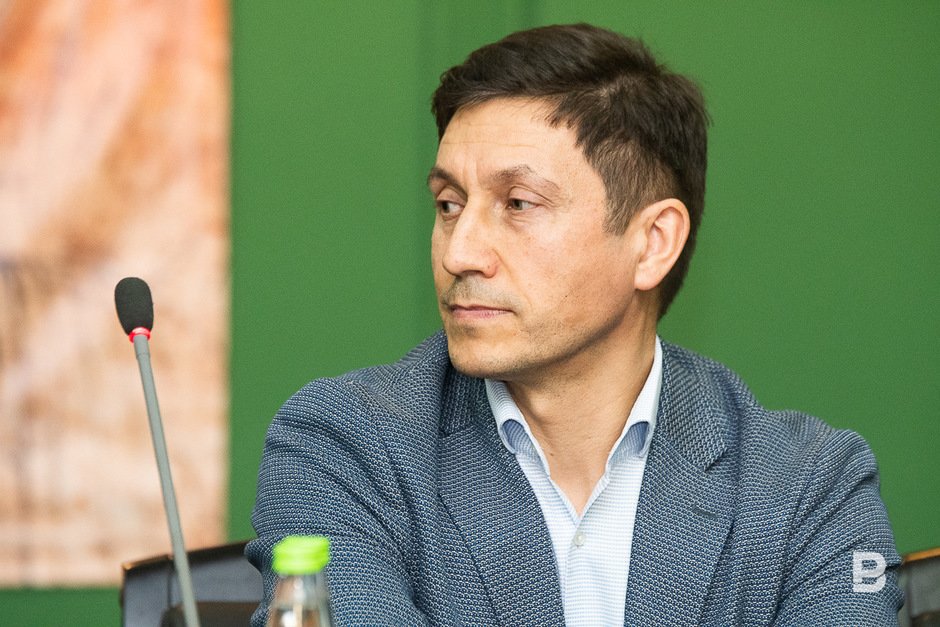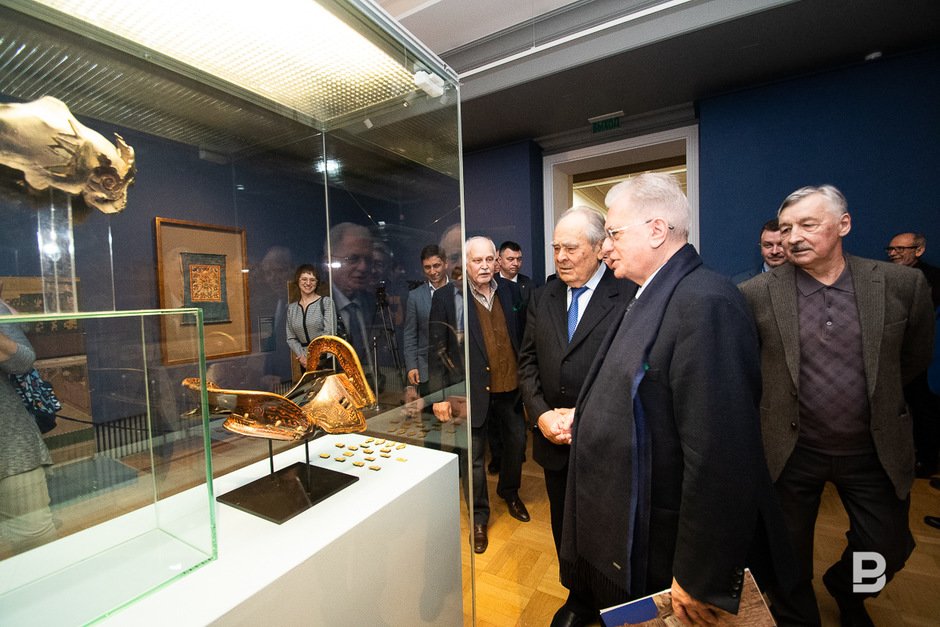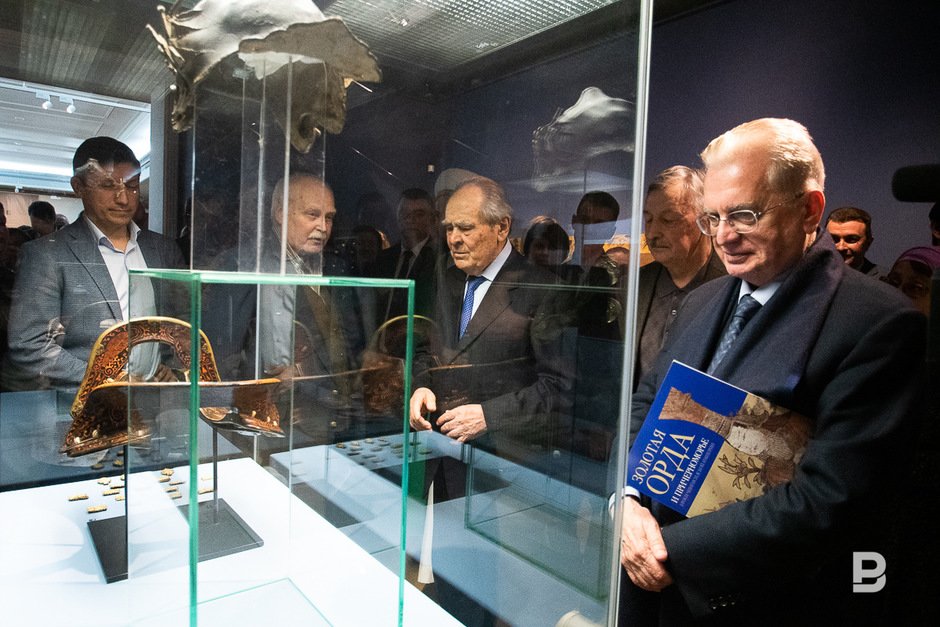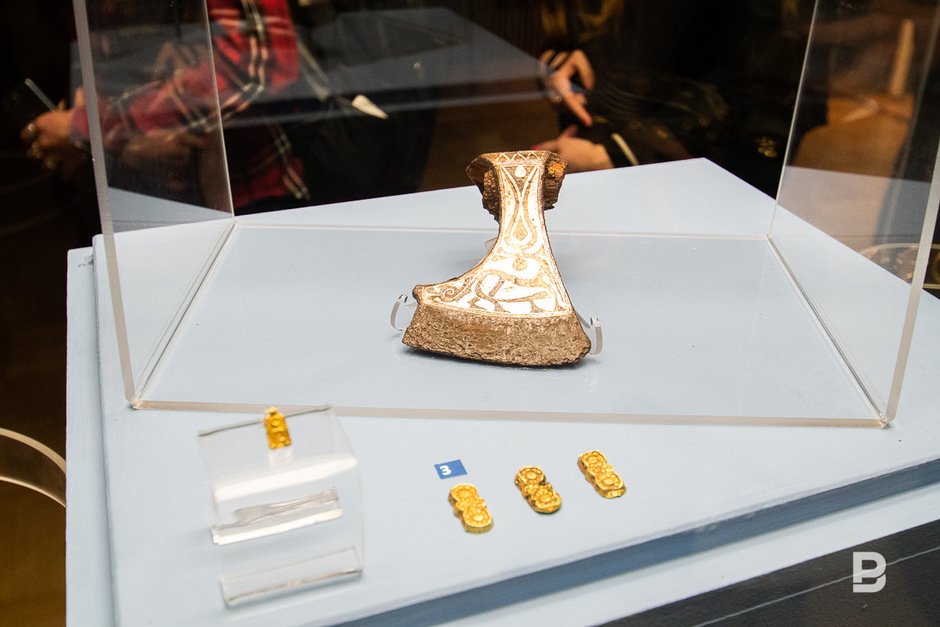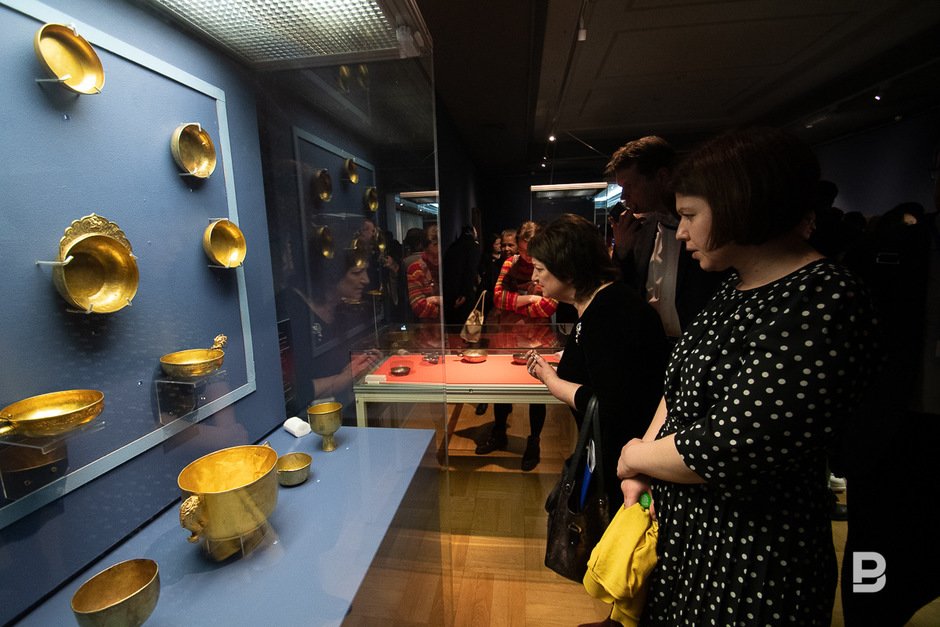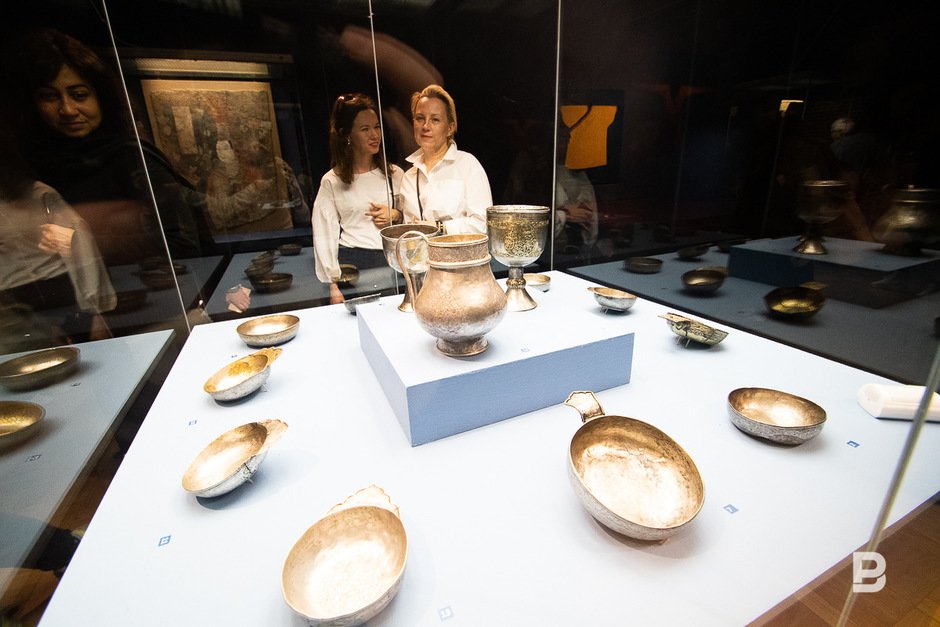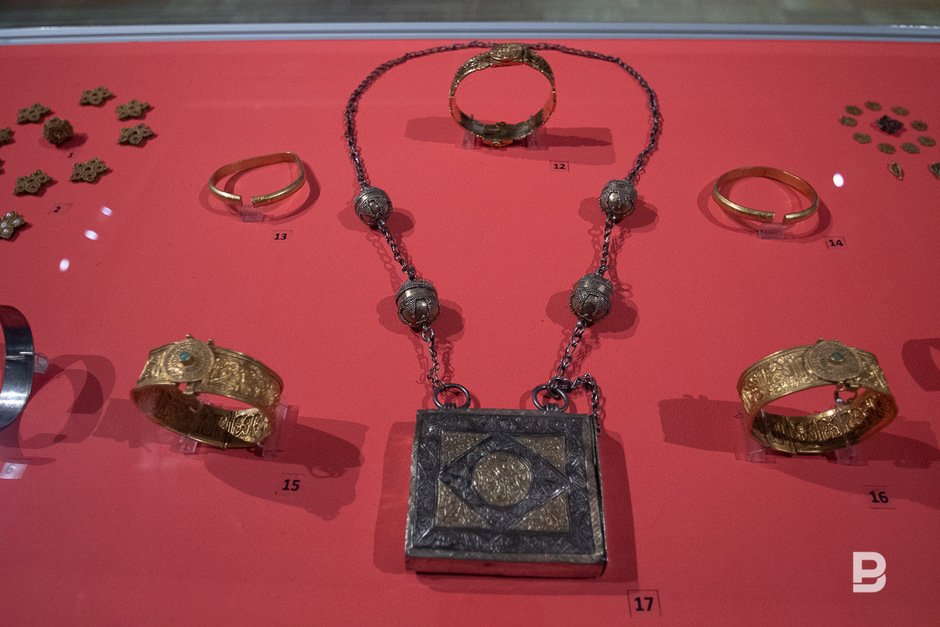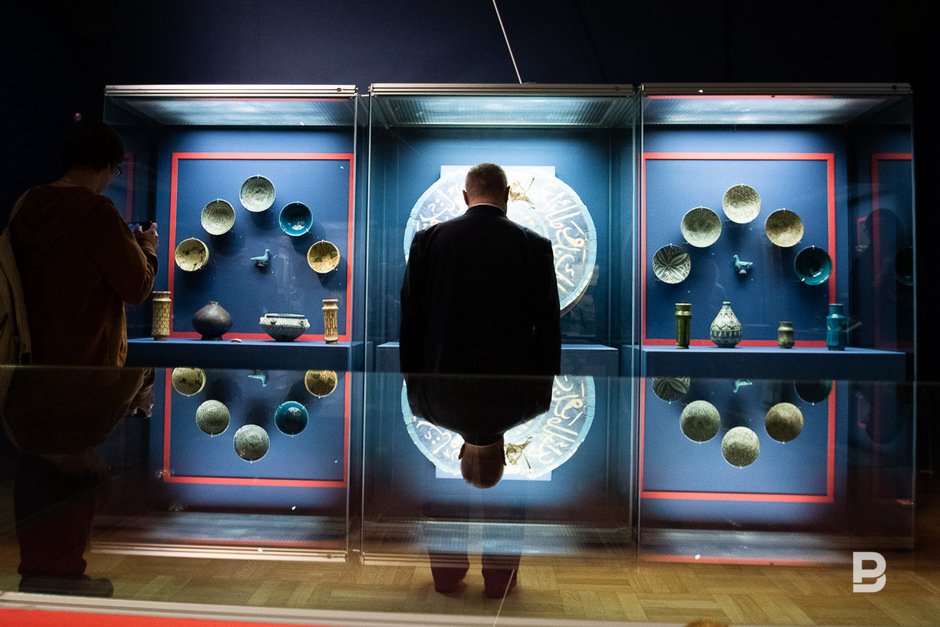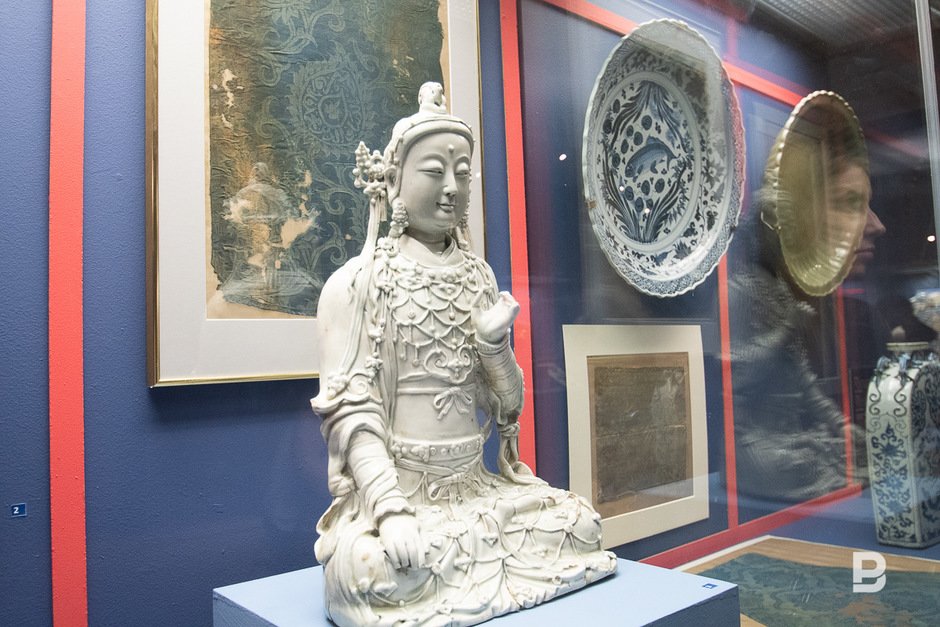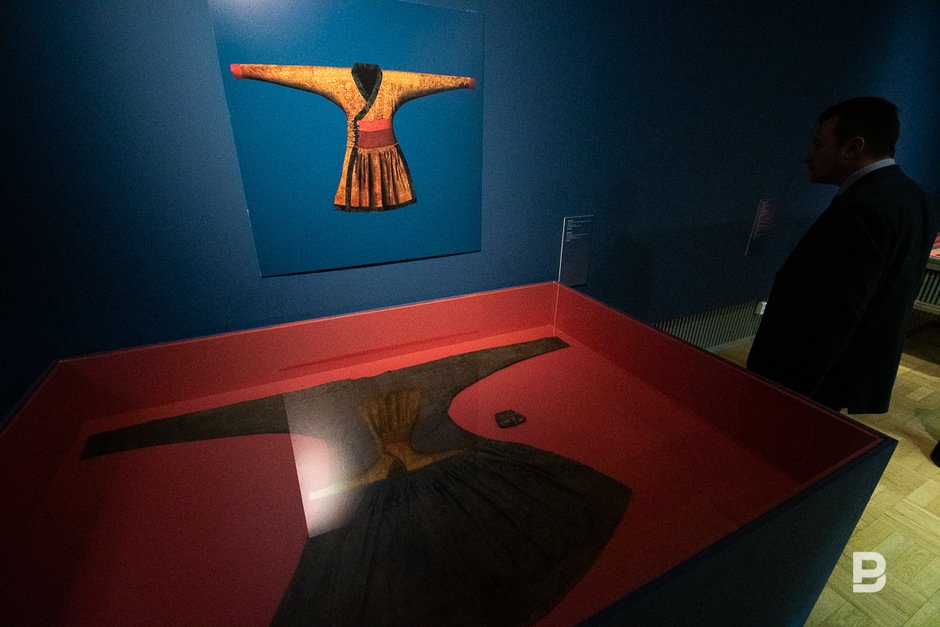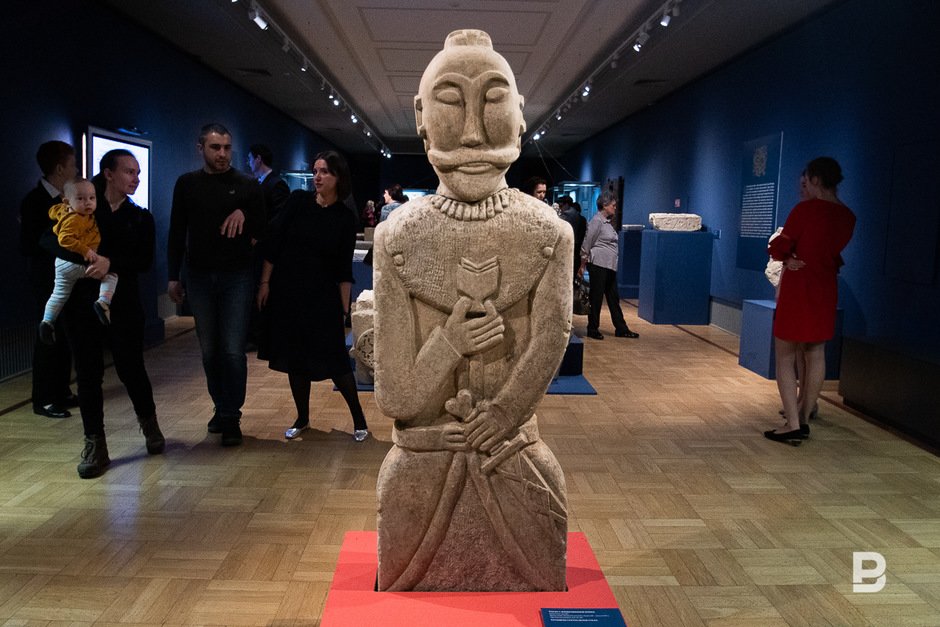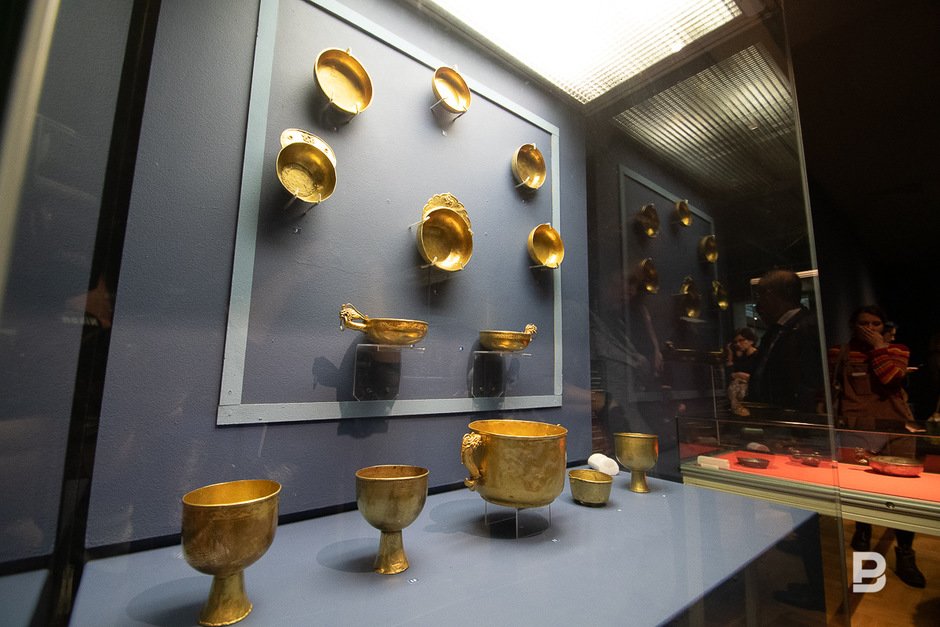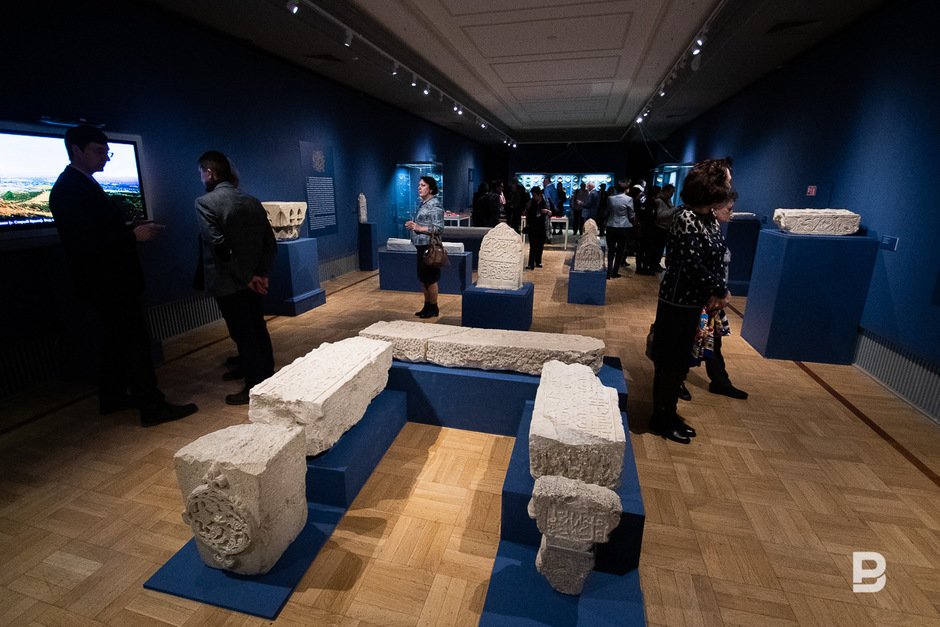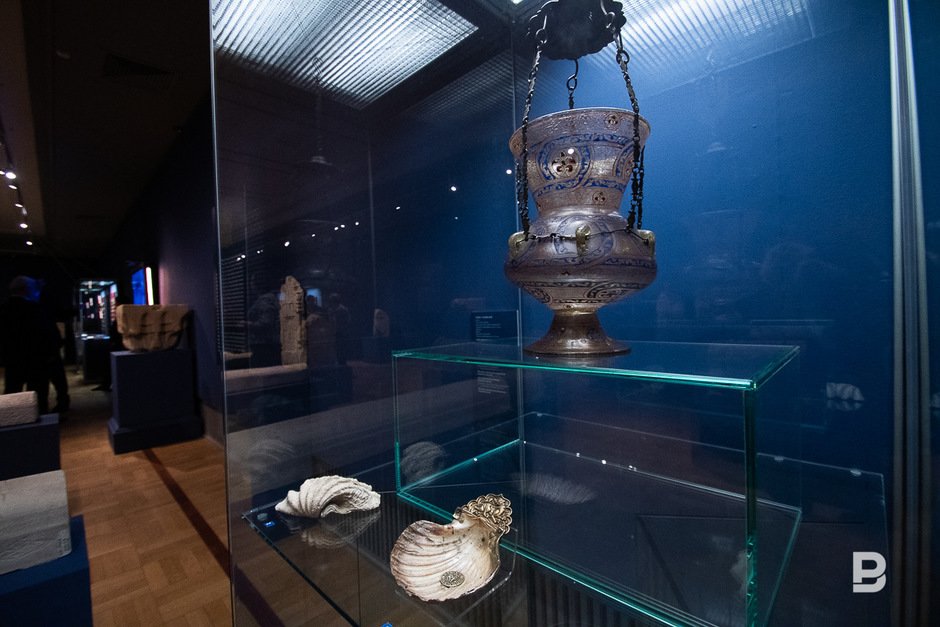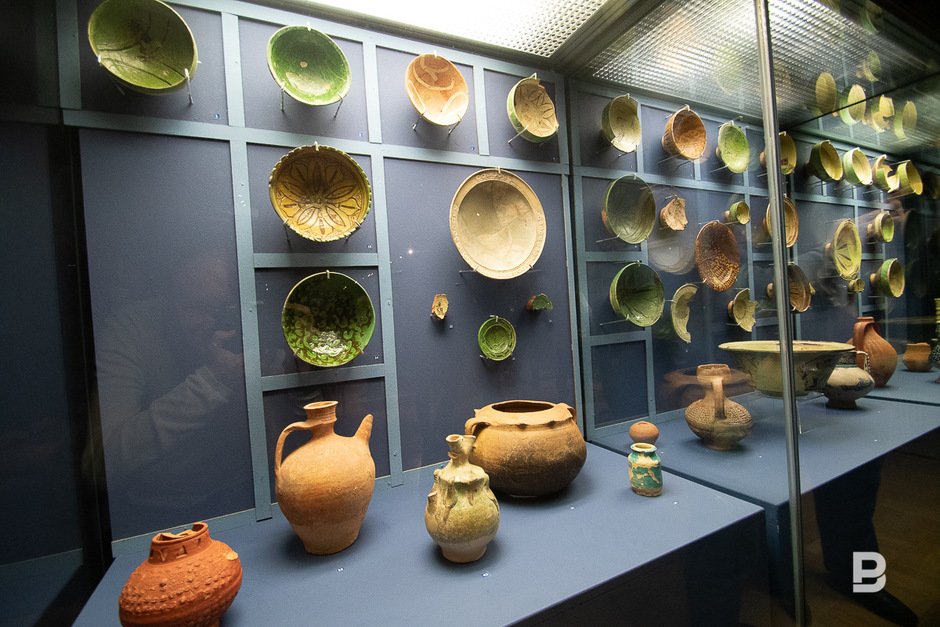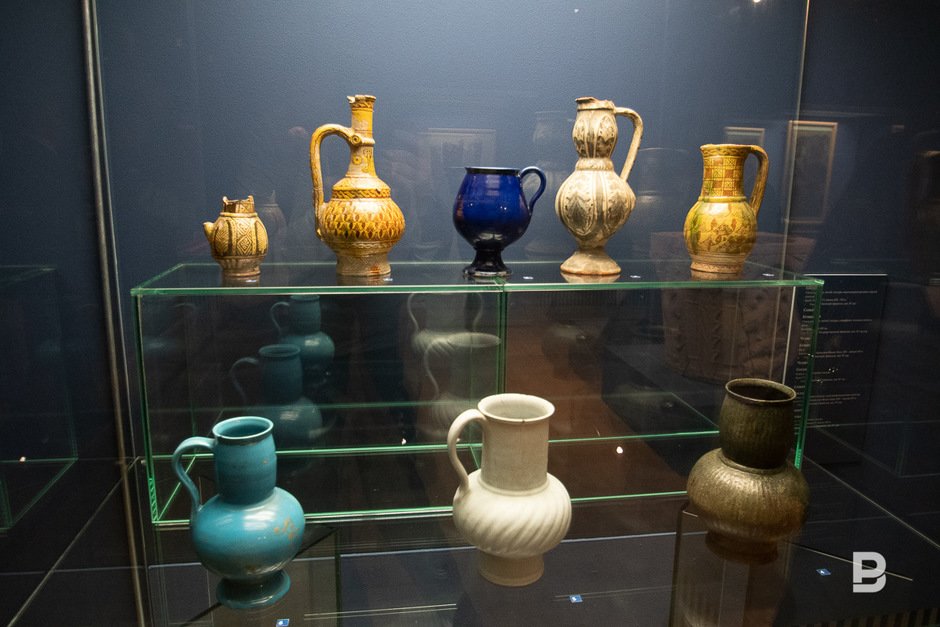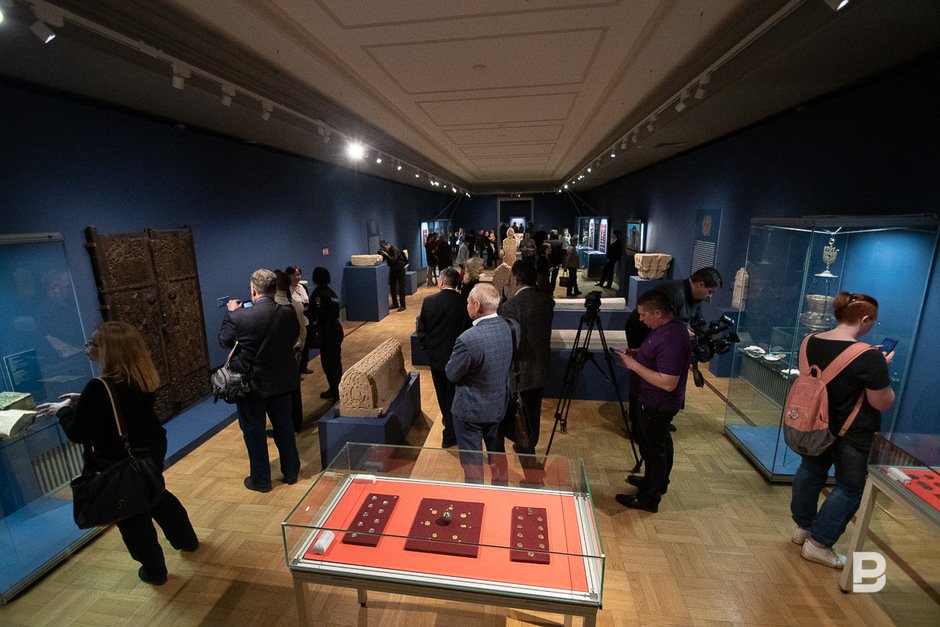Mikhail Piotrovsky: ''Memory wars should turn into dialogues of cultures''
A jubilee exhibition opens in the Hermitage-Kazan Centre
The exhibition The Golden Horde and the Black Sea Littoral Zone. Lessons on Chingissid Empire opened for visitors on 3 April, which has become the 20th since the opening of the Hermitage centre in Kazan. Realnoe Vremya tells you what one can see in the exposition and the message the museum workers are broadcasting.
Item becomes exhibit
As Director of the Hermitage-Kazan Centre Olga Piulskaya explained at the press conference on 2 April, one can see items brought not only from the funds of the State Hermitage but also from eight Russian museums plus exhibits from the National Museum of Minsk on the exhibition. So the exhibition dedicated to the Golden Horde can be considered international. Apart from the museums, the Mardzhani Foundation provided great help in creating the exposition.
Director of the State Hermitage Mikhail Piotrovsky arrived to open the exhibition, his presence always raises the status of an event. By the way, he reminded that the Hermitage-Kazan Centre also opened in 2005 with an exhibition dedicated to the Golden Horde.
Before presenting the exhibition, Piotrovsky held a meeting of the Council of Museums of Russia in the Kazan Kremlin where a single museum space in the country was discussed. And the fact that several museums participated in the creation of the exhibition in the Hermitage centre is an illustrative example of that single space. According to the Hermitage's director, the result is amazing when museums unite parts of their collections to create an exhibition.
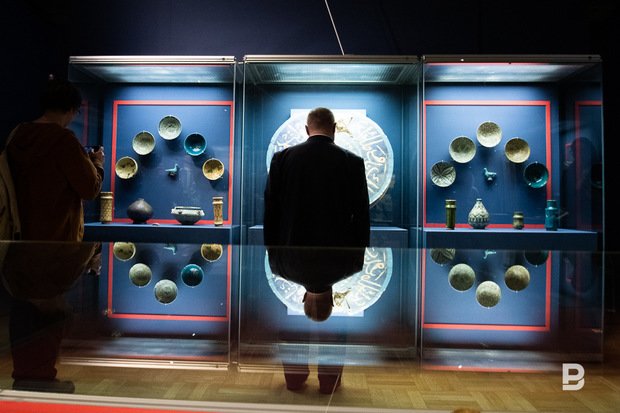
''This exhibition is about what our museums are dealing with now. They turn memory wars into dialogues of cultures. This exhibition is not only collected beautiful items, but it's also a result of big research,'' Piotrovsky noted.
In the welcome speech for the exhibition's catalogue, the Hermitage's director writes that today they are talking about the ''globalisation'' of the world that arose after the Mongol Empire was created and the Golden Horde's place in it.
''This place is significant. It's cultural, commercial or even religious links with China, Mongolia, Iran, Constantinople, Syria, Egypt, Venice, Genoa, Pisa, Lithuania, Russian princedoms… This world was diverse and knew how to benefit from this diversity. The desire to benefit created the famous religious tolerance the Ulus of Jochi is famous for in history,'' supposes Mikhail Piotrovsky.
The director of the State Hermitage advises: ''Every item should be looked over carefully, each of them has its own history making the item an exhibit.''
Book on 'dialogue of cultures'
Piotrovsky says a visit to the exhibition for the spectator where he should spend at least a couple of hours is an exciting ''pioneer research'' and a book on ''dialogue of cultures''. And dialogue is always important and necessary.
The exposition of the exhibition consists of five parts: the culture of equites of early Chingissids, the culture of equites in the Yuan empire and the Golden Horde, the urban culture of Chingissids, northern Black Sea Littoral Zone and the Golden Horde globalisation and the Golden Horde Solkhat Crimea.
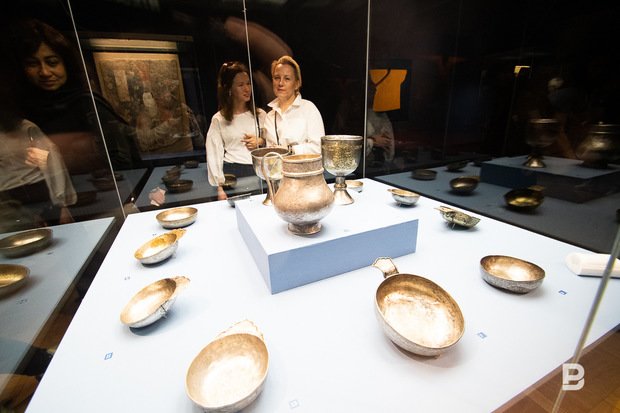
By the way, Piotrovsky calls Solkhat, the capital of the Horde's Black Sea littoral zone, ''the star of the exhibition''. According to Mr Piotrovsky, ''representatives of a number of peoples with different religions lived, traded and intrigued there and adorned it with their works and successes''.
The culture of equites is one of the key cultures of the Chingissids. The famous troika – a horse with its equipment, the horseman's weaponry and clothing. All these three elements were symbolic and indicated the owner's social class. The new exhibition explains this in detail.
The Golden Horde's women are an unexpected topic of the exhibition. Their headdresses could tell you a lot about their owners and were a kind of ''passport''. ''The Sufi bracelet, a cup with a feast featured on it, emblems on stone slabs, dragons on cup handles,'' Mikhail Piotrovsky enumerated only some of the items.
There are about 600 ''items that turned into exhibits'' in general. The story about the Golden Horse and Black Sea Littoral Zone will last till October. And if one looks the exposition over seriously, understanding and feeling ''the aroma of the time'', one visit to the Hermitage centre won't be enough.

